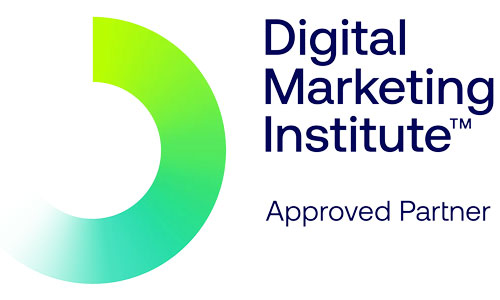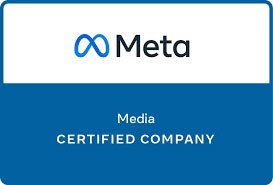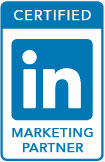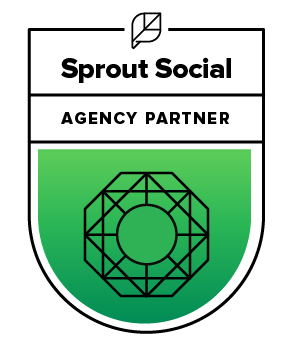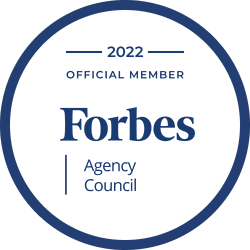In the ever-shifting landscape of today’s market, marketing managers in higher education, healthcare, and public utilities encounter distinct challenges. The ability to effectively communicate the value of marketing initiatives becomes paramount, particularly during times of instability. In this blog, we’ll explore five key strategies to help marketing and communications professionals in these industries navigate these challenges and demonstrate the impact of marketing efforts to their executive teams and stakeholders.
Use Benchmarks When Data Doesn’t Exist
In an unstable market, gathering accurate and relevant data can be challenging. However, marketing managers can rely on industry benchmarks and best practices to support their decision-making and demonstrate the value of their efforts.
For example, in higher education, you should leverage benchmarks like YoY student enrollment rates, retention rates, and alumni engagement metrics. In healthcare, look for benchmarks related to patient satisfaction, quality metrics, and community outreach efforts. Similarly, public utilities can refer to benchmarks like customer satisfaction ratings during critical initiative rollouts and resource conservation programs, like gallons of water saved or the number of compost bins distributed.
To do: Explore industry reports, case studies, and market research to identify relevant benchmarks that align with your organization’s goals. Incorporate these benchmarks into your performance tracking and reporting mechanisms to provide tangible evidence of your marketing impact.
Don’t Rely on ROI to Tell Your Whole Story
Return on Investment (ROI) is undoubtedly an important metric, but it doesn’t capture the full value marketing brings. You should expand your measurement approach beyond financial metrics to include other key performance indicators (KPIs) that align with your organization’s strategic objectives. Consider metrics like brand visibility, customer satisfaction, engagement rates, and market share. These metrics help paint a comprehensive picture of the value generated by marketing initiatives. For higher education, this could look like advertising engagement rates on enrollment versus retention media flights. Similarly, healthcare industries can look at increased market share in rural communities. Additionally, public utilities can consider KPIs like behavior change – new actions taken or habits abandoned.
To do: Identify a range of KPIs that align with your organization’s goals and objectives. Establish measurement mechanisms to track and report on these metrics regularly. Use compelling data visualization techniques, such as infographics, to effectively communicate the broader impact of marketing beyond financial ROI.
Spell Out Scenarios That Tie to Executive Business Challenges
To effectively communicate the value of marketing, it’s essential to align marketing initiatives with the executive team’s business challenges. Marketing managers should articulate scenarios demonstrating how marketing efforts directly address these challenges and contribute to overall business success. For example, if the executive team’s priority is expanding market share to roll out an online program, outline specific marketing strategies and tactics to help achieve that goal. Connect the dots between marketing initiatives and their impact on revenue growth, customer acquisition, or brand reputation.
To do: Engage with key stakeholders, including the executive team, to understand their business challenges and priorities. Craft scenarios highlighting how marketing initiatives directly address these challenges, focusing on tangible outcomes and aligning them with specific business objectives.
Look at the Big Picture Before Deciding What, If Anything, Goes
During times of instability, marketing budgets almost always face scrutiny. You must approach budget discussions by presenting a holistic view of the organization’s marketing ecosystem – the various touch points you have with customers/students/patients, the effects marketing has on improving enrollment or acquisition, and the importance of visibility during critical times like flu season, wildfire evacuation preparedness, and late enrollment for students.
Emphasize the interdependence of different marketing activities and their cumulative impact on the organization’s success – how the chatbot provides critical and timely information about flood prevention, and removing that software expense reduces customer interface opportunities. Highlight the risks associated with cutting entire marketing solutions and advocate for a balanced approach that prioritizes investment in strategic areas while optimizing overall budget allocation.
To do: Conduct a comprehensive assessment of your marketing ecosystem, including the interconnectedness of various initiatives and their contribution to the organization’s goals. Develop a strong business case that outlines the potential risks and consequences of cutting specific marketing activities. Present alternative scenarios that balance cost optimization and maintaining critical marketing functions.
If You Make Cuts, Cut Steps and Not Whole Marketing Solutions
If you do find your marketing budget on the chopping block, don’t panic. Instead of eliminating marketing solutions, i.e., entire enrollment campaigns or media buys, focus on streamlining processes and optimizing resources.
Identify areas where you can eliminate redundancies (one too many traditional billboard placements), simplify workflows (reducing internal decision-making authority), or improve efficiency (hiring outside help instead of hiring) without sacrificing the overall effectiveness of your marketing efforts. This approach allows you to maintain a robust marketing presence while adapting to resource limitations.
To do: Conduct a thorough analysis of your marketing operations to identify opportunities for process optimization and resource consolidation. Prioritize initiatives that provide the most significant impact while minimizing costs. Develop strategies for reallocating resources and streamlining workflows to maximize efficiency and maintain a practical marketing function.
In an unstable market, effectively communicating the value of marketing initiatives becomes a critical responsibility for marketing managers. By utilizing benchmarks, broadening the measurement approach, aligning marketing scenarios with executive challenges, considering the big picture, and optimizing resources, marketing managers can articulate the value of their efforts and secure support for their initiatives. Embrace these strategies, backed by industry insights and best practices, to confidently demonstrate the impact of marketing in an ever-changing landscape.
Remember, effective communication is key. Craft compelling narratives, utilize data visualization techniques, and engage stakeholders through persuasive storytelling to highlight the value that marketing brings to your organization’s success.
Sources:
American Marketing Association (AMA)
Harvard Business Review
Nielsen
MarketingProfs







